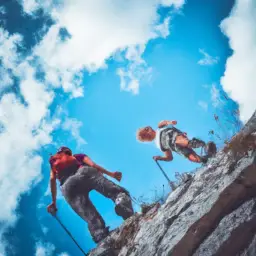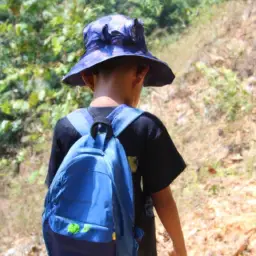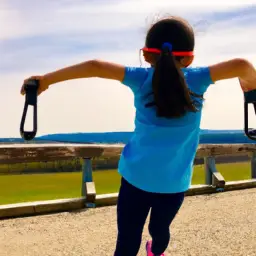Are you an educator looking for innovative approaches to help your students succeed? One crucial trait to cultivate in the classroom is grit.
Grit is the ability to persevere and overcome challenges, and it has been linked to academic and personal success. By teaching grit, you can equip your students with the determination and resilience they need to overcome obstacles and achieve their goals.
In this article, you will learn about the importance of grit in education and discover practical strategies for teaching it in the classroom. From setting goals and encouraging perseverance to embracing failure and fostering a growth mindset, you will explore a range of innovative approaches for cultivating grit in your students.
With these tools and techniques, you can create a supportive learning environment that celebrates progress and helps your students develop the grit they need to succeed in school and beyond.
Key Takeaways
- Grit is important for academic and personal success, and can be developed through strategies such as goal setting, perseverance, growth mindset, and effort over innate talent.
- Building confidence, celebrating progress, creating a supportive learning environment, and fostering a growth mindset are all important for developing grit and resilience in students.
- Feedback, reflection, and collaboration are essential in promoting a positive classroom culture and increasing motivation to succeed.
- Strategies for promoting grit include specific, measurable, and attainable goal setting, reframing obstacles as opportunities for growth, embracing challenges, praising effort over just results, and building relationships with students.
Understanding the Importance of Grit in Education
You can’t just breeze through school and expect to succeed; you’ve got to dig in your heels, push through the tough times, and come out on the other side stronger than ever before. That’s where grit comes in.
Defined as a combination of passion and perseverance towards long-term goals, grit is a characteristic that has been linked to academic success, positive relationships, and overall well-being.
As an educator, it’s crucial to understand the importance of teaching grit in the classroom. Luckily, there are evidence-based strategies for promoting grit among students. These include setting clear goals, providing opportunities for autonomy and mastery, fostering a growth mindset, and emphasizing the value of effort over innate talent.
By incorporating these strategies into your teaching, you can help your students develop the grit they need to succeed both in school and beyond.
Setting Goals and Encouraging Perseverance
By setting achievable goals and reminding yourself of the benefits of perseverance, you’ll be more likely to push through challenges and achieve success in the long run.
Goal setting strategies are an important tool for educators to teach their students. Encouraging students to set both short-term and long-term goals can help them stay focused and motivated throughout the learning process.
When setting goals, it’s important to make sure they’re specific, measurable, and attainable. This way, students can see their progress and feel a sense of accomplishment as they move closer towards their goals.
In addition to goal setting strategies, perseverance techniques can also be taught in the classroom. One effective technique is to encourage students to view challenges as opportunities for growth. By reframing obstacles as opportunities for learning, students can develop a growth mindset and become more resilient in the face of adversity.
It’s also important for educators to provide students with the support and resources they need to overcome challenges. By teaching goal setting strategies and perseverance techniques, educators can help their students develop the grit needed to succeed in both academic and personal pursuits.
Teaching Students to Embrace Failure
Don’t be afraid to embrace failure as a student – it’s an essential part of the learning process and can lead to growth and development. Many students are taught to fear making mistakes and view failure as a negative outcome. However, embracing mistakes and learning from failure can actually lead to greater success in the long run.
Here are a few reasons why embracing failure is crucial for student success:
-
It allows for experimentation and creativity
-
It builds resilience and determination
-
It fosters a growth mindset rather than a fixed mindset
By teaching students to embrace their mistakes and learn from their failures, educators can help them develop a growth mindset and ultimately achieve greater success both inside and outside the classroom.
Fostering a Growth Mindset
As an educator, you’ve got a crucial role in fostering a growth mindset in your students.
This means teaching them to embrace challenges and view them as opportunities for growth rather than failure.
Encouraging your students to believe in their ability to learn and celebrating the learning process can help them develop a love of learning and a lifelong desire for self-improvement.
Teaching Students to Embrace Challenges
You can help your students develop the mindset to embrace challenges by encouraging them to view difficulties as opportunities for growth. Embracing discomfort is the first step towards building resilience.
When students learn to face their fears and challenges head-on, they are more likely to develop a sense of self-efficacy and confidence in their abilities. As a teacher, you can foster this mindset by providing opportunities for students to stretch their limits and take on challenging tasks.
One effective approach is to praise effort rather than just results. By acknowledging the hard work and perseverance that goes into tackling difficult tasks, you are reinforcing the idea that challenges are an essential part of the learning process.
Additionally, you can model a growth mindset by sharing your own struggles and successes, and by demonstrating the value of persistence and determination.
With your guidance, your students can learn to embrace challenges and develop the resilience they need to overcome obstacles and achieve their goals.
Encouraging Students to Believe in their Ability to Learn
Imagine yourself as a student who’s encouraged to believe in your ability to learn. You feel empowered knowing that with hard work and dedication, you can achieve anything you set your mind to. This is the type of positive reinforcement that educators should strive for when teaching grit in the classroom.
Building confidence in students is crucial to their success, as it allows them to take risks, learn from their mistakes, and ultimately grow as individuals.
Here are five ways educators can encourage students to believe in their ability to learn:
- Provide opportunities for students to showcase their strengths and talents.
- Celebrate progress, no matter how small.
- Encourage students to take risks and embrace challenges.
- Provide constructive feedback that highlights areas for growth.
- Create a safe and supportive learning environment where students feel valued and respected.
By implementing these strategies, educators can help their students develop a growth mindset and realize their full potential. When students believe in their ability to learn, they’re more likely to persevere through challenges and ultimately achieve their goals.
Celebrating the Learning Process
Picture yourself enjoying the journey of learning, where every step you take towards progress is celebrated with enthusiasm and joy. Imagine a classroom where teachers and students alike embrace mistakes and view them as opportunities for growth and reflection. By celebrating the learning process, educators can foster a growth mindset in their students, promoting resilience and grit.
One way to celebrate the learning process is through the use of progress trackers. This can be done through a simple chart or a more elaborate digital system. By tracking their progress, students can see how far they have come and celebrate their achievements along the way. Additionally, teachers can use progress trackers to provide feedback and support, helping students reflect on their learning and identify areas for improvement. Overall, by embracing mistakes and reflecting on progress, educators can create a positive and supportive learning environment where students feel empowered and motivated to succeed.
| Celebrating the Learning Process | Examples | Benefits |
|---|---|---|
| Progress Trackers | Simple chart or digital system | Helps students see their progress and celebrate achievements |
| Reflection Activities | Journaling or group discussions | Encourages students to think critically and identify areas for improvement |
| Sharing Success Stories | Student presentations or classroom displays | Inspires and motivates students to work towards their goals |
| Collaborative Learning | Group projects or peer-to-peer feedback | Builds teamwork and communication skills, while promoting a growth mindset |
Creating a Supportive Learning Environment
Creating a supportive learning environment can be a game-changer for students, increasing their sense of belonging and motivation to succeed. As an educator, you play a crucial role in creating that environment. Here are some tips to get you started:
-
Building relationships: Students are more likely to engage in learning when they feel a sense of connection with their teacher. Take the time to get to know your students on a personal level, and let them get to know you. Share your interests and hobbies, and encourage them to do the same. This will help create a positive classroom culture where everyone feels valued and respected.
-
Providing feedback: Feedback is an essential part of the learning process, but it can be difficult for students to receive criticism. Make sure that your feedback is constructive and specific, highlighting what students are doing well and offering suggestions for improvement. Encourage your students to take risks and make mistakes, and be there to support them when they need it.
-
Offering choice: Students are more invested in their learning when they have some control over what they are doing. Offer choices in the assignments and activities you assign, allowing students to choose the topics they are interested in or the format they prefer. This will help create a sense of ownership over their learning and increase their motivation to succeed.
-
Creating a safe space: Students need to feel physically and emotionally safe in order to learn effectively. Create a safe and welcoming classroom environment by setting clear expectations for behavior and addressing any bullying or harassment as soon as it occurs. Make sure that all students feel included and respected, regardless of their backgrounds or abilities.
Measuring Grit and Celebrating Progress
You can measure progress and develop resilience in your students by setting achievable goals and acknowledging their efforts to reach them. Celebrating progress is also important to cultivate a growth mindset in your pupils.
For instance, if a student has been struggling with a particular subject, set a goal with them to improve their test score by a certain percentage in a specific timeframe. Then, track their progress and celebrate the milestones they achieve along the way. This could be as simple as praising their effort in class or giving them a small reward for their hard work.
Measuring grit in your students can also be done through regular check-ins and self-reflection exercises. Encourage your students to set their own goals and regularly assess their progress towards achieving them. By doing this, they’ll learn to take ownership of their learning and develop a sense of accountability.
Additionally, teach them to reflect on their failures as opportunities for growth and to learn from their mistakes. All these practices can help your students develop grit and resilience, which’ll serve them well not only in their academic pursuits but also in their personal and professional lives.
Frequently Asked Questions
What are some common misconceptions about grit and how can educators address them in their teaching?
When it comes to defining grit, there are a few common misconceptions that educators should be aware of.
Some people believe that grit is solely about persevering through difficult tasks, but it actually includes the ability to set long-term goals and work diligently towards achieving them.
Another misconception is that grit is something that you either have or you don’t, but in reality, it can be developed and strengthened.
As an educator, it’s important to address these misconceptions and promote strategies for promoting grit in the classroom.
This can include fostering a growth mindset, providing opportunities for students to set and achieve goals, and teaching resilience and perseverance through challenging tasks.
By helping students develop grit, they will be better equipped to handle the challenges they will face in school and in life.
How can parents and caregivers support the development of grit in their children outside of the classroom?
As a parent or caregiver, you play a vital role in supporting the development of grit in your child outside of the classroom. One way to do this is by encouraging and facilitating their participation in extracurricular activities that align with their interests and passions.
These activities provide opportunities for your child to set goals, work towards them, and overcome challenges. Additionally, parental involvement is crucial in helping children develop grit.
You can model perseverance and resilience by sharing stories of your own challenges and how you overcame them. You can also provide emotional support and encouragement when your child faces setbacks or failures.
By fostering a growth mindset and providing opportunities for your child to develop grit, you can help set them up for success in all areas of their life.
Are there any potential drawbacks or challenges to emphasizing grit in education, and how can they be overcome?
When it comes to emphasizing grit in education, there are potential drawbacks and challenges that should be considered.
One potential drawback is that students might feel pressure to always persevere, even when it’s not necessary or healthy. Additionally, emphasizing grit might not work for everyone, as different students have different needs and learning styles.
However, these challenges can be overcome by focusing on a growth mindset and teaching students to recognize their strengths and weaknesses. It’s also important to emphasize that grit is not the only factor in success, and that failure is a natural part of the learning process.
By addressing these potential drawbacks and challenges head on, educators can help their students develop grit in a way that is healthy and effective.
How can educators incorporate the development of grit into different subjects and learning activities beyond traditional academic tasks?
To incorporate the development of grit into different subjects and learning activities beyond traditional academic tasks, you can focus on real-life application and project-based learning. By doing so, you can provide students with opportunities to apply their skills and knowledge in practical situations, which can help build their perseverance and resilience.
For example, you can assign projects that require students to solve real-world problems, work collaboratively, and take risks. You can also incorporate activities that challenge students to push beyond their comfort zones, such as public speaking or creative writing. By emphasizing the importance of grit in these activities, you can help students develop the mindset and skills they need to succeed in school and beyond.
What role do social and cultural factors play in the development and expression of grit, and how can educators be sensitive to and address these factors in their teaching?
As an educator, it’s crucial to recognize the impact that social and cultural factors have on the development and expression of grit in your students.
From a student perspective, factors like family background, socioeconomic status, and cultural values can greatly shape their attitudes towards perseverance and resilience.
That’s why it’s essential for teacher training to include discussions on cultural sensitivity and awareness, so that educators can better understand and address these factors in their teaching.
By being mindful of these influences and creating a supportive classroom environment, educators can help their students develop grit and achieve their goals.
Conclusion
So, there you have it! You now have a better understanding of the importance of teaching grit in the classroom and some innovative approaches for educators to use.
By setting goals, encouraging perseverance, embracing failure, fostering a growth mindset, creating a supportive learning environment, and measuring progress, you can help your students develop the grit they need to succeed in school and in life.
Remember, teaching grit is not a one-time lesson or activity – it’s an ongoing process that requires consistent effort and dedication. But the rewards are worth it.
By helping your students develop grit, you’re not only setting them up for academic success, but you’re also equipping them with the skills they need to navigate the challenges and obstacles they’ll face in the real world.
So keep on teaching, keep on encouraging, and keep on celebrating progress!









































































































